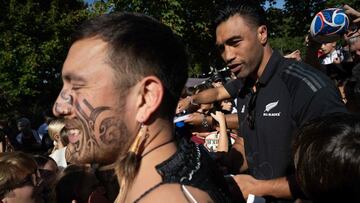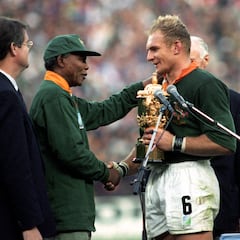Why do the All Blacks do the Haka? Origin and history of the Māori dance
What is the Haka? Uncovering the origins and lyrics of the All Blacks’ iconic rugby dance and the fascinating meaning behind it.

The Haka, whether viewed as intimidating, intriguing or of little consequence, undeniably holds a unique status as one of the most extraordinary spectacles in the world of sports.
Most notably associated with New Zealand’s rugby union team, this Māori ceremonial dance is a pre-match ritual steeped in a rich history that fills the nation with justified pride. Its significance transcends time and place, remaining as compelling today as it was when first showcased beyond New Zealand’s borders.
But what lies behind the lyrics and purpose of the Haka? Let’s delve into its origins:
The Haka: a cultural and symbolic tradition
The Haka is a dynamic ceremonial dance that engages the entire body in rhythmic movements, including swaying, chest and thigh slapping, stamping, and stylized gestures conveying intensity and aggression. Accompanied by a chant and sometimes characterized by fierce facial expressions like bulging eyes and protruding tongues, the Haka is a performance meant to convey intimidation.
As per tradition, the #BlackFerns7s celebrate their Cup Final victory with a HAKA! #Paris7s pic.twitter.com/WGGySis3xP
— Black Ferns (@BlackFerns) June 10, 2018
Traditionally, the Māori (indigenous) people of New Zealand utilized the Haka to demonstrate a tribe’s pride, unity, and strength. The origins of the Haka can be traced back to Māori legend, Tane-rore, the son of the sun god Tama-nui-te-ra, and Hine-raumati, representing the essence of summer. In Māori culture, the quivering appearance of the air on hot summer days is believed to signify Tane-rore dancing for his mother. This quivering, light, and rapid movement serves as the foundational element of all Haka, with the performers’ trembling hands symbolizing Tane-rore’s dance.
Although commonly recognized as a war dance meant to embolden warriors on the battlefield, it also serves as a customary means of celebration, entertainment, welcome, and even a challenge to visiting tribes.
Why does the Rubgy team perform the Haka?
In the context of rugby, the All Blacks perform the Haka as a powerful display of their strength and unity just before the kickoff of a Test match. The women’s team also has its own version, known as ‘Ko Uhia Mai.’
The Haka made its rugby debut when the inaugural New Zealand representative rugby team, known as The Natives, embarked on a tour of Britain and Australia in 1888-89. The Haka they performed, known as “Ka Mate,” is still an integral part of the All Blacks’ repertoire today.
Initially, the Haka was reserved for international matches played abroad by the All Blacks. It wasn’t until 1986 that this revered tradition was incorporated into home matches. Since then, the Haka has been performed with unwavering precision, deep respect, and profound passion, embodying the spirit and identity of the All Blacks.
What do the lyrics mean?
Regarding the lyrics of the Haka, a video produced by World Rugby explains that they blend tribal elements with instructional guidance for the performers. The chant begins with lines like
Related stories

Rugby team nicknames

Rugby World Cup 2023: How much money does the winner get?
“Listen carefully, prepare yourself, hold fast,” and continues “Slap your hands against your thighs, stamp your feet as hard as you can.
Our first Haka at Eden Park in 2021 💥
— All Blacks (@AllBlacks) August 19, 2021
🎥: @skysportnz pic.twitter.com/DctYw2Lnvq
“Will I die? Will I live? This is the hairy man who brought the sun and caused it to shine. A step upward. Another step upward. The sun shines. Hi.”
